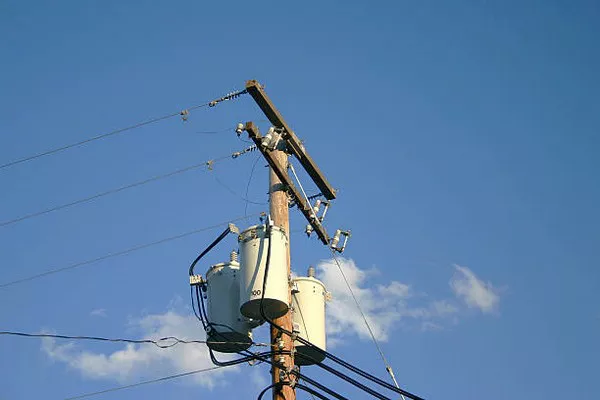In the intricate web of electrical power systems, electrical transformers play a pivotal role in ensuring the efficient generation, transmission, and distribution of electricity. These devices are ubiquitous in power networks, seamlessly transforming voltage levels to enable safe and effective power distribution. This article delves into the fundamental workings of electrical transformers, their various types, and the critical role they play in maintaining a reliable and stable power supply.
Basics of Electrical Transformers:
At its core, an electrical transformer is a static device that transfers electrical energy between two or more circuits through electromagnetic induction. The basic components of a transformer include a magnetic core and two or more coils, commonly known as the primary and secondary windings.
Magnetic Core: The transformer’s magnetic core is typically made of ferromagnetic materials like iron or steel. This core provides a low-reluctance path for the magnetic flux generated by the current flowing through the windings.
Primary and Secondary Windings: The primary winding is connected to the power source, while the secondary winding is linked to the load. When an alternating current (AC) flows through the primary winding, it creates a changing magnetic field in the core. This changing magnetic field induces a voltage in the secondary winding, allowing the transfer of electrical energy from the primary to the secondary circuit.
Voltage Transformation:
One of the primary functions of electrical transformers is to change the voltage level of electrical power. Transformers are classified into two main types based on their voltage transformation capabilities:
Step-Up Transformers: These transformers increase the voltage level from the primary winding to the secondary winding. Step-up transformers are commonly used at power plants to boost the voltage generated by generators before transmission over long distances.
Step-Down Transformers: Conversely, step-down transformers decrease the voltage level from the primary winding to the secondary winding. These transformers are crucial in power distribution networks, reducing high-voltage electricity from transmission lines to safer levels for industrial, commercial, and residential use.
Types of Electrical Transformers:
Transformers come in various types, each designed for specific applications. Understanding these types is essential for optimizing power distribution systems.
Distribution Transformers: Distribution transformers are widely used for stepping down voltage levels to the appropriate levels for end-users. They are commonly found on utility poles and in substations, ensuring electricity reaches homes and businesses at safe and usable levels.
Power Transformers: Power transformers are employed in high-power applications, such as power generation and transmission. They handle large amounts of electrical energy and play a crucial role in maintaining the stability of the electrical grid.
Instrument Transformers: Instrument transformers are specialized transformers used for metering and protection purposes. Current transformers (CTs) measure current, while voltage transformers (VTs) measure voltage. These transformers provide accurate readings for monitoring and control systems.
Importance in Power Distribution:
Electrical transformers are the backbone of power distribution systems, playing a crucial role in ensuring the reliability and efficiency of electricity supply. Their significance can be highlighted through the following key points:
Energy Efficiency: By facilitating the transmission of electrical energy at higher voltages over long distances, transformers minimize energy losses that occur due to resistance in power lines. This results in a more energy-efficient power distribution system.
Voltage Regulation: Transformers help maintain voltage levels within acceptable limits, ensuring that electrical appliances and equipment receive the appropriate voltage for optimal performance. This voltage regulation is vital for preventing damage to electrical devices and ensuring the safety of end-users.
Grid Stability: In large-scale power systems, transformers contribute to grid stability by balancing the load and voltage levels. They enable the smooth flow of electricity through the grid, preventing overloads and voltage fluctuations that could lead to blackouts or damage to equipment.
Adaptability to Load Variations: Transformers are designed to handle varying loads, making them adaptable to the changing demands of power distribution networks. This flexibility ensures a stable power supply even during peak usage periods.
Maintenance and Monitoring:
To ensure the continued reliability of electrical transformers, regular maintenance and monitoring are essential. This includes:
Oil Testing: Many transformers are filled with insulating oil to dissipate heat and provide insulation. Regular testing of this oil helps identify potential issues, such as overheating or contamination, allowing for timely maintenance.
Dissolved Gas Analysis (DGA): DGA is a diagnostic tool used to analyze gases dissolved in transformer oil. Changes in gas levels can indicate potential faults, helping utilities identify and address issues before they lead to transformer failure.
Thermography: Infrared thermography is used to detect abnormal temperature patterns in transformers, which can indicate issues like loose connections or internal faults. Early detection through thermography enables proactive maintenance and prevents major failures.
Conclusion:
Electrical transformers are the unsung heroes of power distribution, silently working to ensure a stable and reliable electricity supply. From voltage transformation to grid stability, these devices play a critical role in modern power systems. Understanding the fundamentals of transformers, their types, and their importance in power distribution is key to appreciating the intricate network that brings electricity to our homes and businesses. As technology advances, transformers will continue to evolve, contributing to the efficiency and sustainability of our global power infrastructure.

